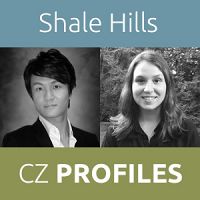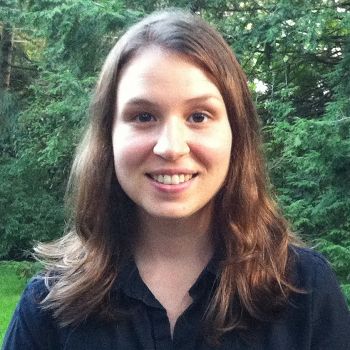Critical Zone Profiles - Meet the people doing CZO science (Shale Hills CZO)
26 Sep 2016
Get a sense of the people and the work. Several members of the Shale Hills CZO are profiled here, including students and professors.
What kind of work do critical zone scientists do? Who are some of the scientists working at Critical Zone Observatories across the country? How does their work inform our understanding and management of critical zone resources, such as water, soil, and food?
These brief profiles feature just a few of the 250+ senior scientists, university faculty, postdoctoral researchers, and graduate students who work at the nine CZO sites currently funded by the National Science Foundation. CZO people are cross-disciplinary scientists who have expertise in fields including hydrology, geochemistry, geomorphology, ecology, biology, and climatology. More profiles will be added over time, as new scientists join the CZO teams.
The profiles provide a non-technical introduction to the work CZO people do. Each scientist was asked to respond to the following questions:
1. What is the goal of your work?
2. How is your work relevant to the science community and to the larger human communities in which we live?
3. Why is studying the critical zone important?
4. How has the CZO network been valuable to you in your work?
5. How can the CZOs help improve our understanding and management of natural resources?
Profiles: Grad Students | Early Career | Boulder | Calhoun | Catalina-Jemez | Eel | IML | Luquillo | Reynolds | Shale Hills | Southern Sierra | and more profiles coming
Susquehanna Shale Hills CZO
TESS RUSSO (hydrologist, Assistant Professor)
Tess Russo aims to improve our understanding of hydrologic system dynamics as they are perturbed by climate and human actions. Her research includes quantifying components of the groundwater budget, modeling vadose zone infiltration rates, and estimating natural groundwater recharge. Visit Tess' profile >
JOANMARIE DEL VECCHIO (geomorphologist, graduate student)
Joanmarie Del Vecchio is trying to understand how erosion and hydrology differed during the cold, glaciated periods that the landscape central Pennsylvania was exposed. She looks at two rocks types in the CZO to study how ice-driven erosion affected rates and patterns of landscape evolution Visit Joanmarie's profile >
YUNING SHI (meteorologist, Research Associate)
Yuning Shi uses numerical models (e.g., land surface hydrologic models and ecosystem models) to study the interactions among the atmosphere, vegetation, and soil, and to incorporate this understanding into prediction frameworks. This is in an effort to be able to better assess the impact of climate change on water resources. Visit Yuning's profile >
HYOJIN KIM (geochemist, postdoctoral fellow)
Hyojiin Kim, an aqueous geochemist, is asking questions about what, when, and how particles are moving through the CZ. She is interested in understanding the role of particles in the evolution of Critical Zone (CZ) structure by studying water and rock chemistry. Visit Hyojin's profile >
LILLIAN HILL (ecologist, graduate student)
Lillian Hills investigates the imprint of biota on acid- and redox-weathering and nutrient cycling between bedrock, soil, and biota. Her work includes looking at soil and leaf nutrient concentrations in shale and sandstone geology and measuring soil gas concentrations. Visit Lillian's profile >
Explore Further







